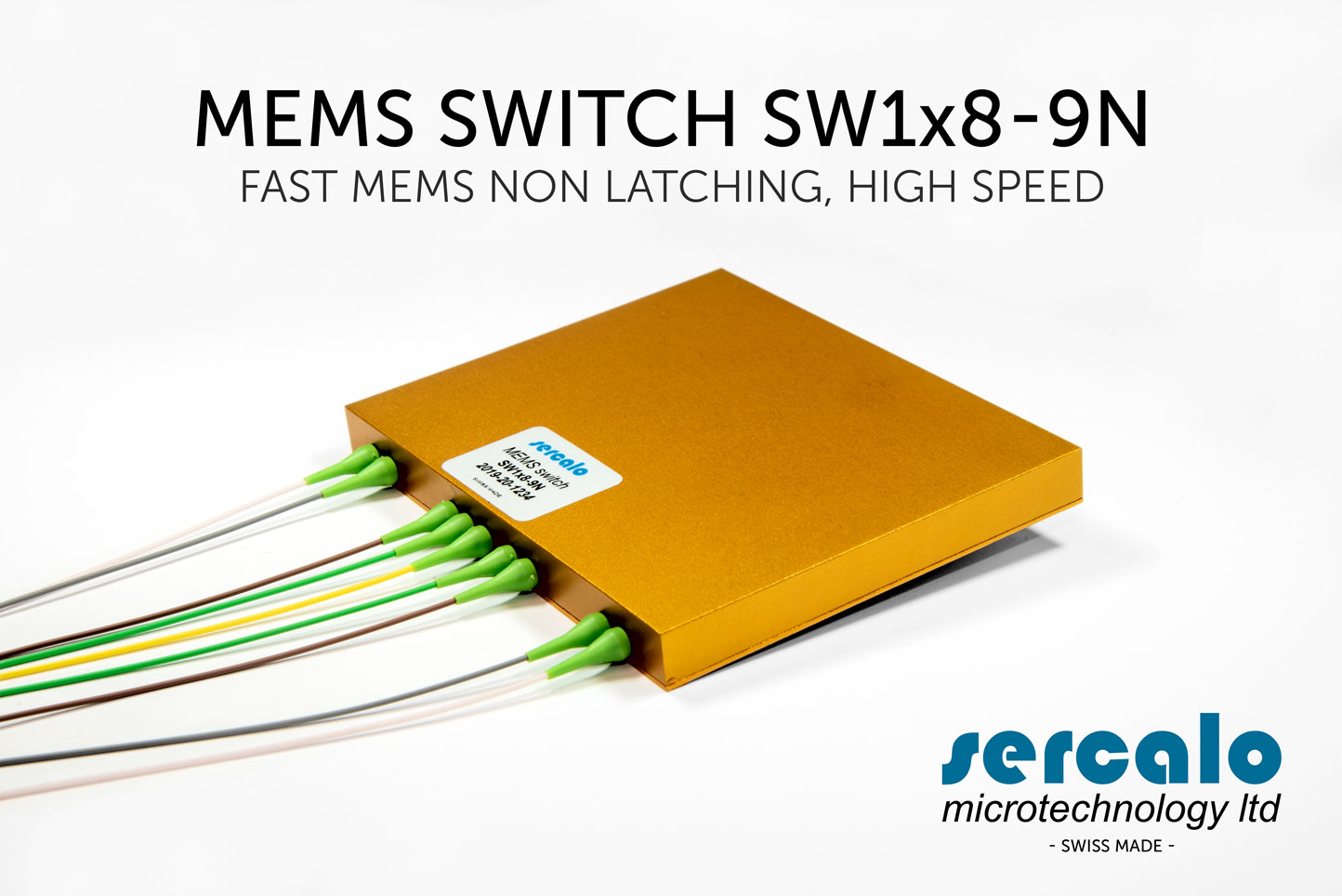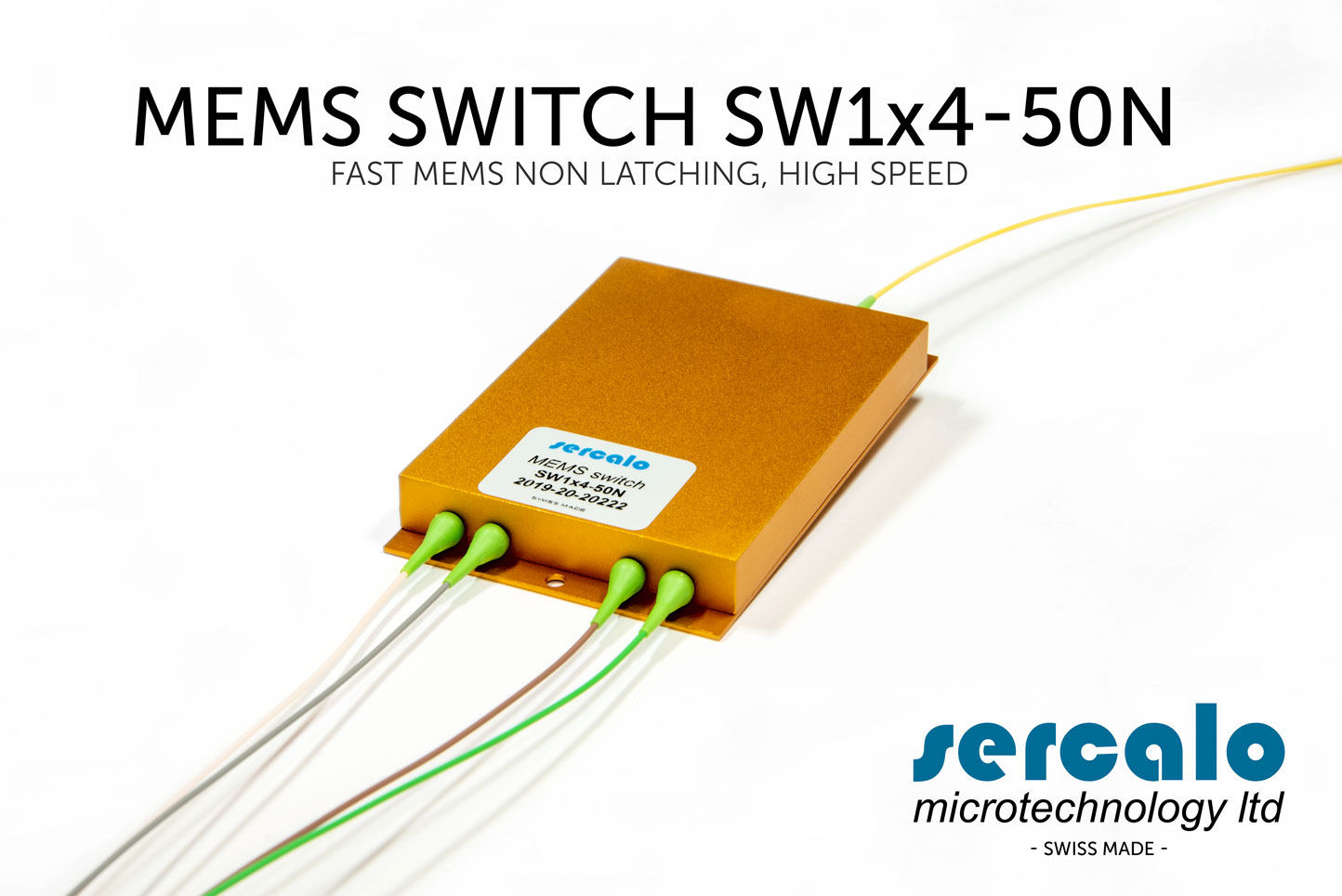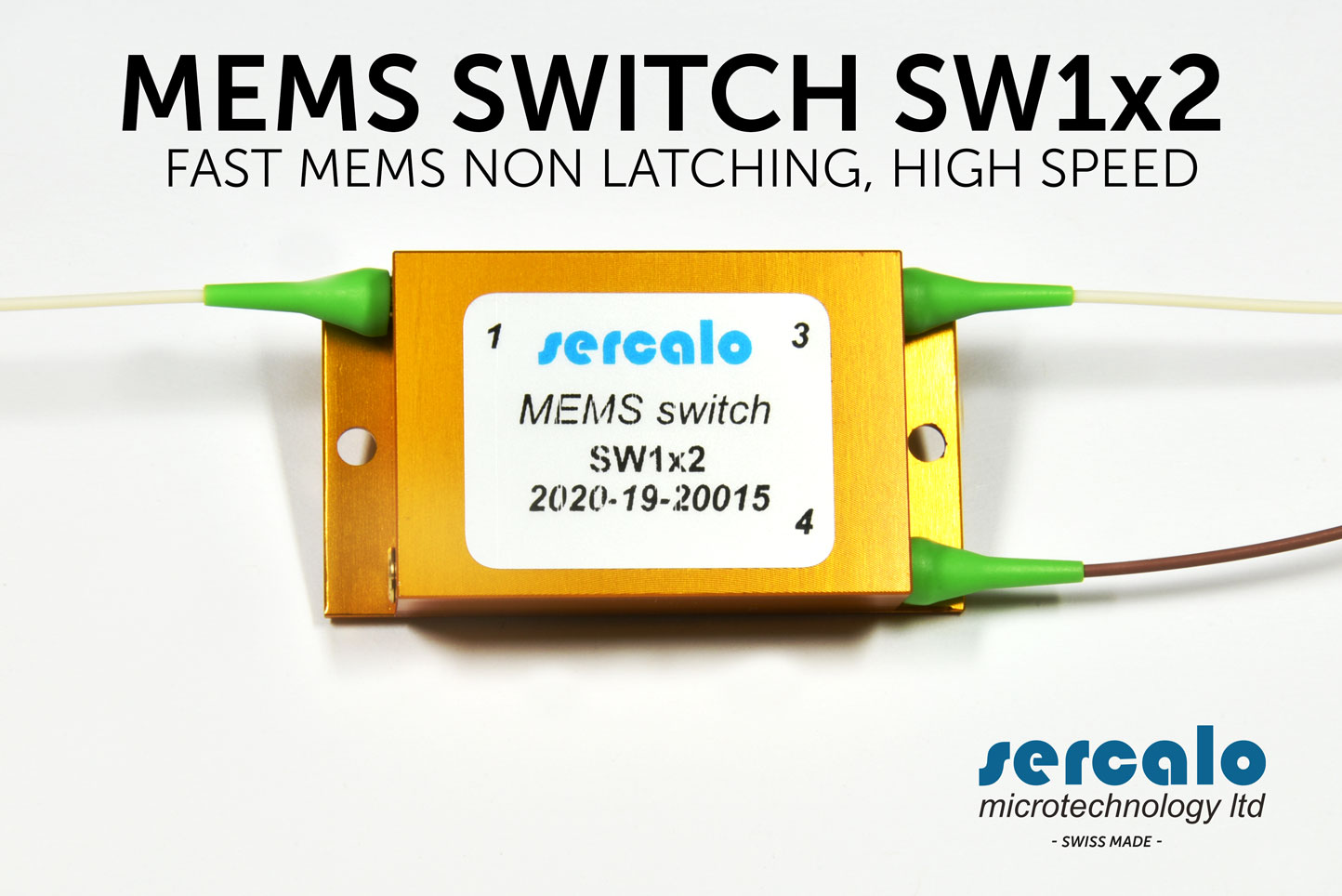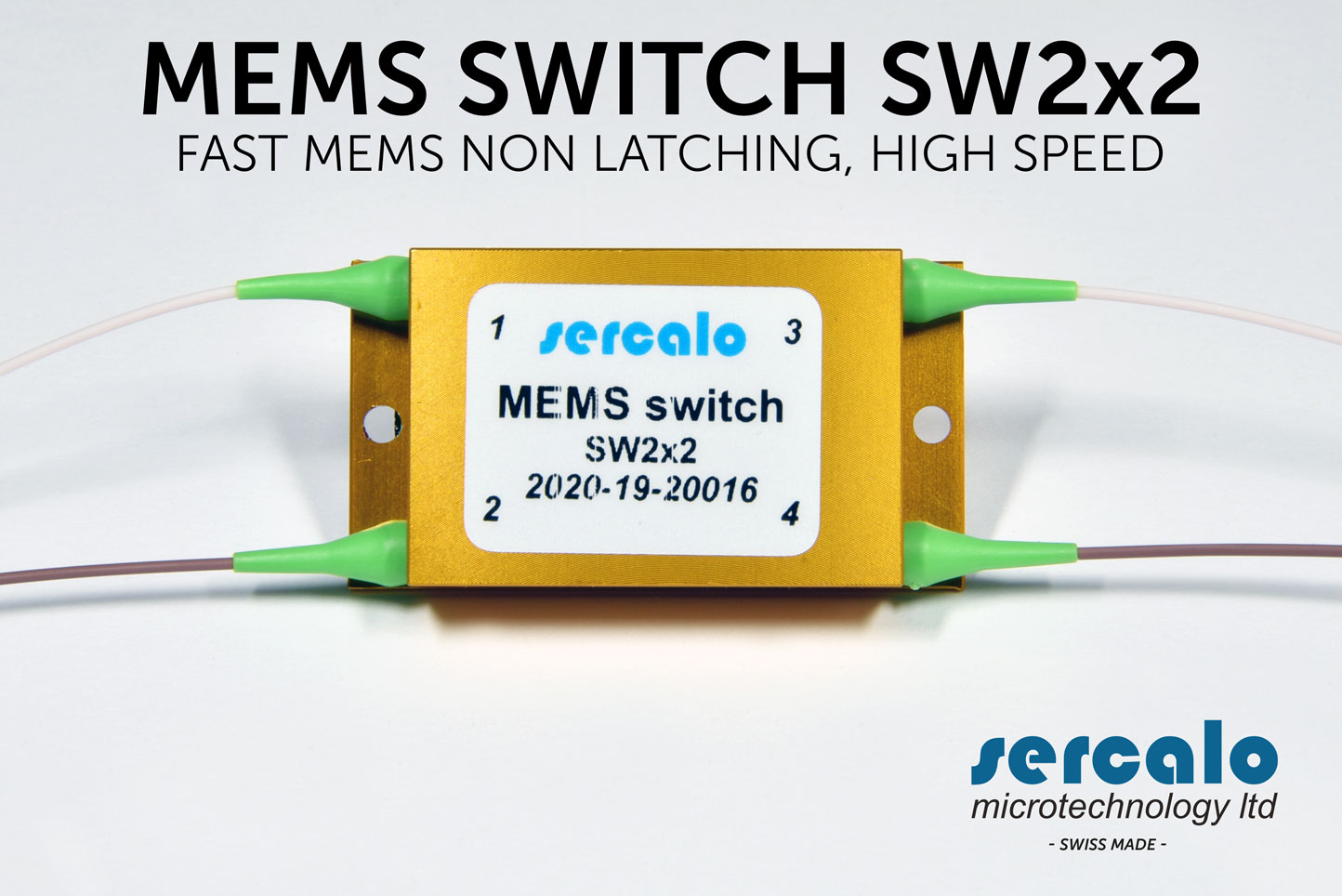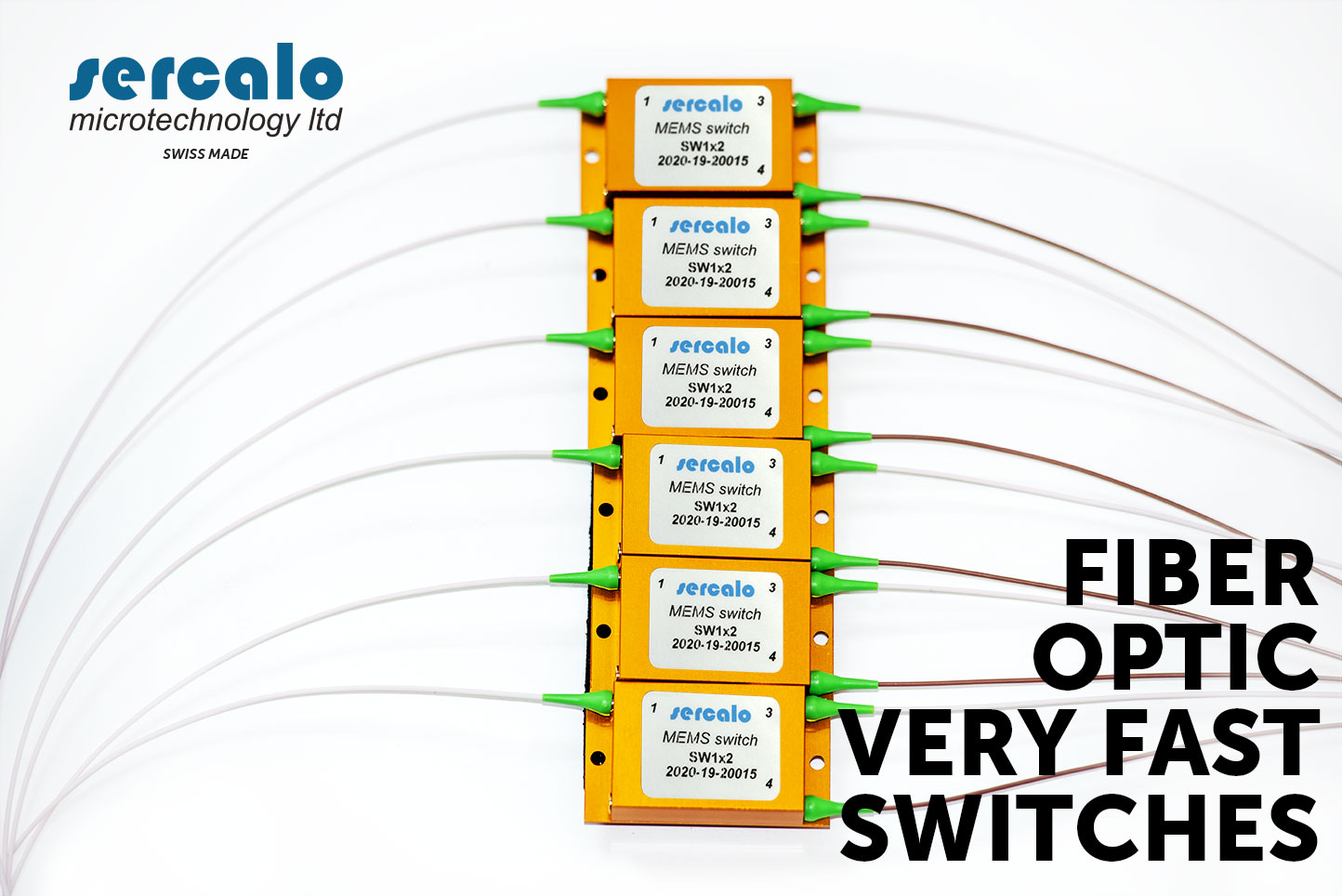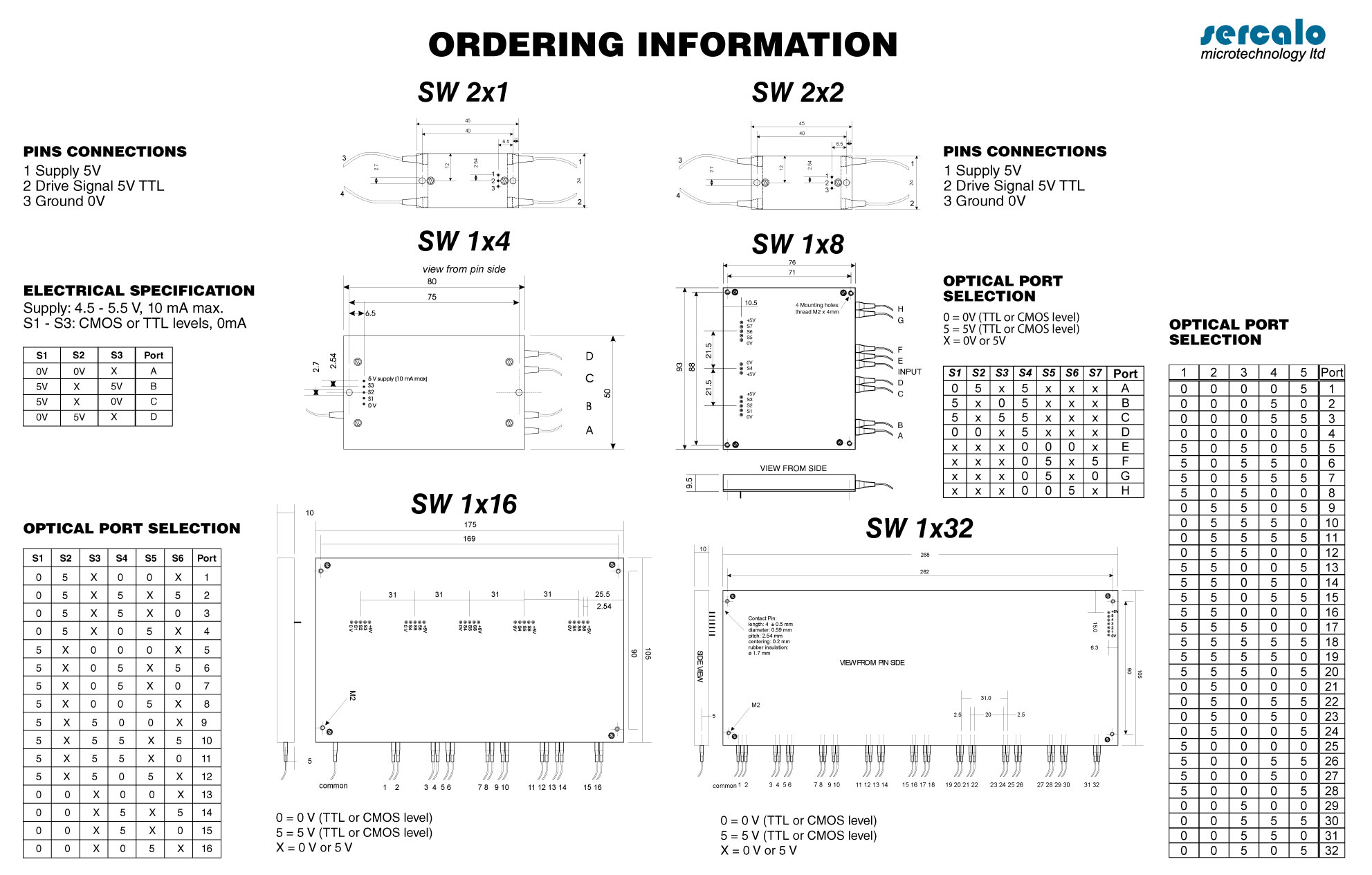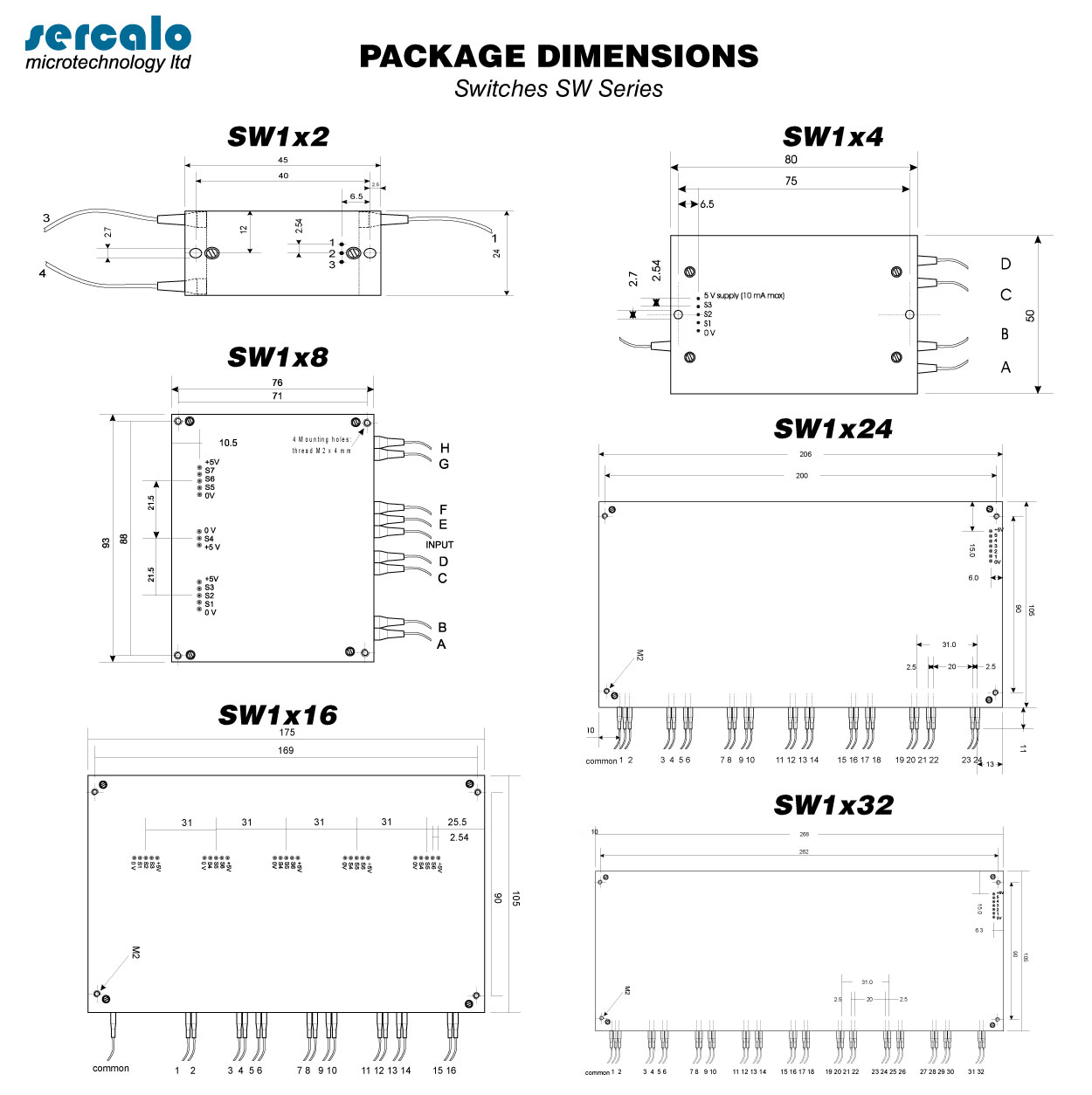FAST NON LATCHING OPTICAL MEMS SWITCHES SW
The SW fiber optic switch is a very fast opto-mechanical switch based on the MEMS technology. The component is designed for fast switching between two single mode fiber ports. The switch is available in several variants. The highly reliable switching mechanism uses an integrated micromirror and features below 1 ms switching time and only 0.5 dB insertion loss.
The miniature package withstands rugged environments and is well suited for direct mounting on printed circuit boards.
The switch is qualified according to Telcordia GR 1221.
| # | FEATURES | APPLICATIONS |
|---|---|---|
| 1 | Reliable | Optical reconfiguration |
| 2 | 0.5 dB insertion loss | Protection switching |
| 3 | 1 ms response time | Network restoration |
| 4 | 60dB crosstalk | Source selection |
| 5 | miniature size | Monitoring |
| 6 | non-latching | Wavelength provisioning |
